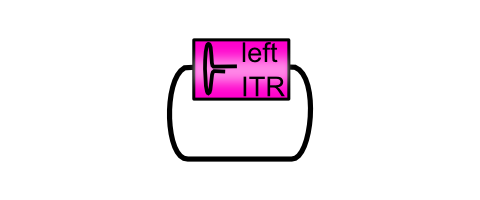Difference between revisions of "Part:BBa K404100"
| (One intermediate revision by one other user not shown) | |||
| Line 20: | Line 20: | ||
|[http://2010.igem.org/Team:Freiburg_Bioware FreiGEM 2010] | |[http://2010.igem.org/Team:Freiburg_Bioware FreiGEM 2010] | ||
|} | |} | ||
| − | <br /><br /><br /><br /><br /><br /><br /><br /> | + | <br /><br /><br /><br /><br /><br /><br /><br /><br /><br /><br /><br /><br /><br /> |
| − | This BioBrick is a very GC-rich sequence with several palindromic motifs | + | This BioBrick is a very GC-rich sequence with several palindromic motifs forming strong hairpin structures. By using the Virus Construction Kit of the Freiburg iGEM team 2010, any gene of interest, which is cloned between this part and the right ITR can be packaged into the AAV2 capsid. These recombinant AAV2 particles can be used for different applications, and were mainly created for therapeutic usage, including cancer treatment with prodrug activating enzymes or imaging approaches. |
Latest revision as of 17:04, 30 October 2010
[AAV2]-left-ITR
| [AAV2-left-ITR] | |
|---|---|
| BioBrick Nr. | BBa_K404100 |
| RFC standard | RFC 10 |
| Requirement | pSB1C3 |
| Source | pAAV_MCS provided by Stratagene |
| Submitted by | [http://2010.igem.org/Team:Freiburg_Bioware FreiGEM 2010] |
This BioBrick is a very GC-rich sequence with several palindromic motifs forming strong hairpin structures. By using the Virus Construction Kit of the Freiburg iGEM team 2010, any gene of interest, which is cloned between this part and the right ITR can be packaged into the AAV2 capsid. These recombinant AAV2 particles can be used for different applications, and were mainly created for therapeutic usage, including cancer treatment with prodrug activating enzymes or imaging approaches.
Usage and Biology
The AAV2 ITRs serve as primers for the host cells’ DNA polymerase which converts the single-stranded virus genome into double-stranded DNA as a part of the viruses replicative cycle. They also play important roles in the virus integration into and rescue from the hosts genome, the formation of concatamers in the host cell nucleus and the encapsidation of the viral genome(K. Berns 1990). Due to these essential functions, the ITR structures cannot be deleted from a viral vector and need to be delivered in cis.
Sequence and Features
- 10COMPATIBLE WITH RFC[10]
- 12COMPATIBLE WITH RFC[12]
- 21COMPATIBLE WITH RFC[21]
- 23COMPATIBLE WITH RFC[23]
- 25COMPATIBLE WITH RFC[25]
- 1000COMPATIBLE WITH RFC[1000]

